The premise is simple: read one comic every day for the entire year. It seems like a simple task but there is no way that I read 365 comics last year, even if you count the individual issues in collections. So, this year, I am committing myself to this reading challenge, in the hope that I can broaden my reading habits and fully engage with my favorite hobby again.
As the year comes to a close, I count down the last of the comics I’ve read as part of Project 365. At times it has been a challenge, and the busy, festive season has seen me picking up a random selection of comics. A few are what I would call comfortable reads, comics that I have owned for years and know quite well, while others are brand new to me, picked up while out shopping for Christmas.
There is no rhyme or reason to this final selection; no overarching theme and purpose. These are just the comics I had to hand when I found a spare moment to read.

Credit: DC Comics
Comic number 349: The Original Swamp Thing Saga (1979)
Collecting three issues of the original Swamp Thing comic written by Len Wein and illustrated by Bernie Wrightson and Joe Orlando, this comic is a work of beauty. It contains three stories which are submerged in horror and magic. They focus on the darker side of human nature, filled with fear, and hate, and destruction.
Swamp Thing is a speechless creature, wandering from place to place, attempting to escape the human world but always managing to get dragged into local events. He is a cross between the 1970s T.V. Hulk and Frankenstein’s Creature. Wrightson’s artwork is gorgeous to look at: a mix of the horrific and the comedic. The stories drag you in and force you to witness atrocities and acts of cruelty with denouements that are justified but not always justice.
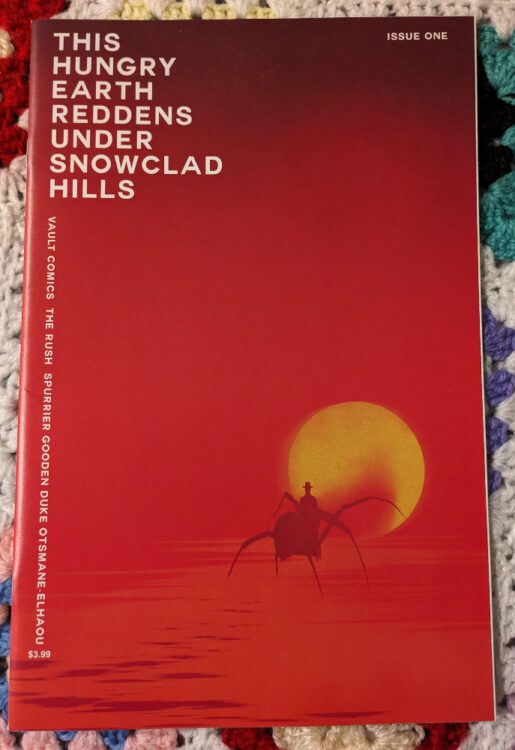
Credit: Vault Comics
Comic Number 350: The Rush #1
I love a good western and the first issue of The Rush is a wonderful example of one. Just like Canary, there are undertones of something else, in this case potentially science fiction, but all the hallmarks of the western have been included in this opening issue.
Si Spurrier always weaves a magnificent narrative, he is one of my go-to writers, and Nathan Gooden captures the wild west aesthetic beautifully. There is so much going on dramatically and visually. And it has one of the best modern letterers working on it, Hassan Otsmane-Elhaou. It’s worth checking out just to see his work.
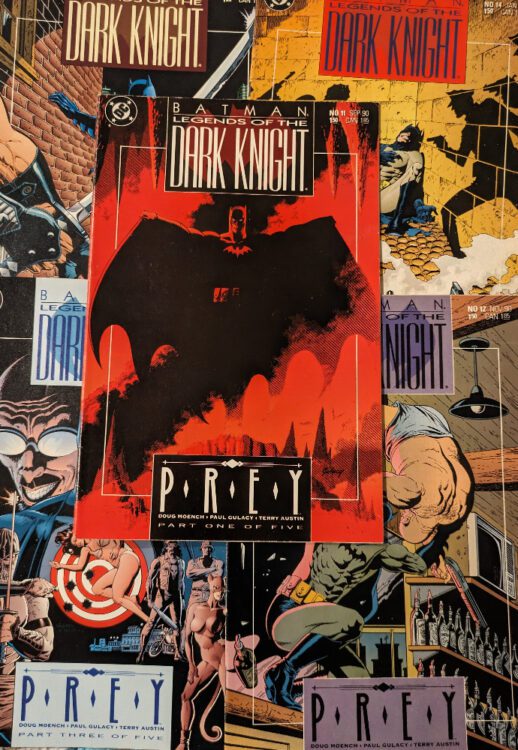
Credit: DC Comics
Comic Number 351 to 355: Legends of the Dark Knight #11-15 (Prey)
In the early 1990s, DC released Legends of the Dark Knight, the first solo Batman comic for decades. It retold the early days of Batman, and was heavily influenced by Tim Burton’s take on the character. The comics were a little bit darker, more gruesome, but also had otherworldly elements with a supernatural twist (read Grant Morrision’s Gothic storyline for example, which is one of my favourite Batman stories ever).
In Prey, Doug Moench and Paul Gulacy reintroduce Catwoman and Hugo Strange, using the villains as a way to dissect Batman’s psyche. Strange is an obsessive character, twisted by his own genius into a monster who creates destructive forces and believes that he is superior to everyone. There is a sexual threat to his character that plays out in the subplot and adds a disturbing layer to the story. Catwoman acts as a contrast to this, she is sexualised but she is also in control. She uses her femininity to her advantage and is not a victim.
There are a number of exciting elements to Prey, with complex storylines and superb artwork, leading the reader through a stand alone adventure that delves into the very heart of what makes Batman work as a character and as a centerpiece for a series. The first few years of Legends of the Dark Knight produced some amazing stories, each one different but equally fascinating.
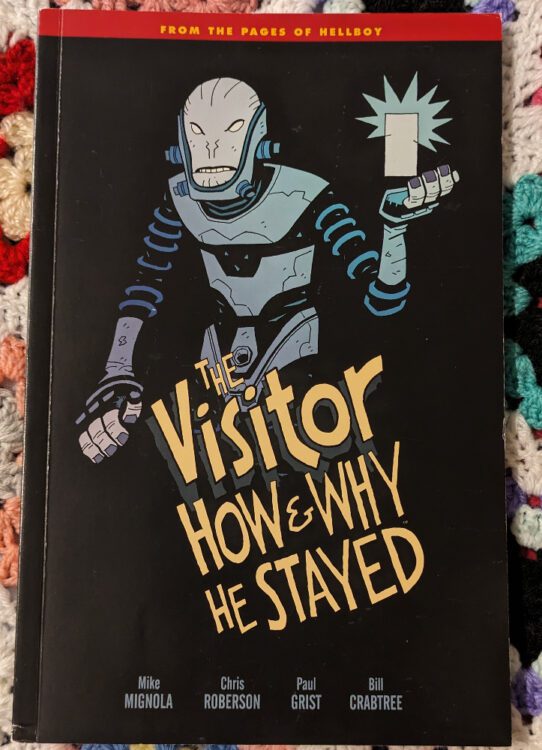
Comic Number 356 – 357: The Visitor: How & Why He Stayed
This comic is from the pages of Hellboy. I dip in and out of the Hellboy world, not really following the central character. I do like to read about the bit part characters, those that come and go and have lives outside of the main narrative.
The Visitor was given to me by someone who picked it up in a charity shop, and I’ve read the first two chapters. Mike Mignola’s strength in storytelling is giving the reader an empathetic central character that you instantly make a connection with. Almost from the beginning you are invested in the character and what happens to them. Add to this the abstract visuals that have become synonymous with Hellboy stories and you have a moving and fascinating comic book experience.
In The Visitor, Chris Roberson creates a visual narrative that embodies the alien experience, making the reader feel as isolated as the central character. We get to witness the events of previous stories by watching the alien, therefore we, as an observer, become twice removed from the action.
The second chapter in this volume is outstanding. It contains action, adventure but also a moving relationship between the Visitor and his lover on Earth. It is surprisingly emotional and a touching tale, foreshadowing an inevitable sadness.
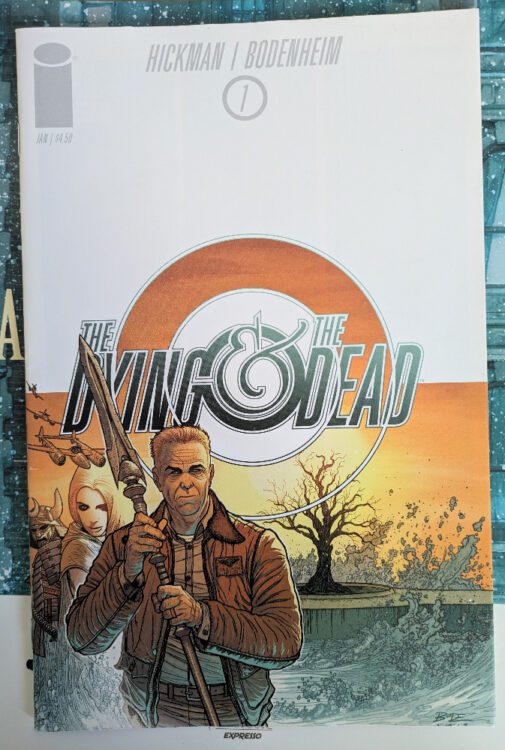
Credit: Image Comics
Comic Number 358: The Dying and The Dead #1
This Image comic by Jonathan Hickman, Ryan Bodenheim, Michael Garland, and Rus Wooton is a fantastical story of assassins and conspiracies. The opening sequence involves a violent robbery and is presented in a very cinematic way. It is like the opening of a James Bond movie, which I am sure is the intention. From that point onward a number of Hickman tropes interact with an ageing Colonel who is introduced at the bedside of his dying wife.
Vast military bases of evil sit side by side with underground cities populated with fantastical characters, often completely white and who speak in rhymes and riddles — this is Hickman, after all.
I love the scope of this comic and the larger than usual first issue packs a lot of narrative in. The artwork by Bodenheim is wonderful but it’s the colour work and the lettering that marks this comic out from others on the shelf. Simple colour palettes for individual panels separate the page into digestible chunks that not only break up the page but also enhance the narrative. Wooton’s letters do the same thing but with the characters, making them distinctive.
The Dying and The Dead #1 is a beautifully crafted comic that contains just enough to get you hooked.
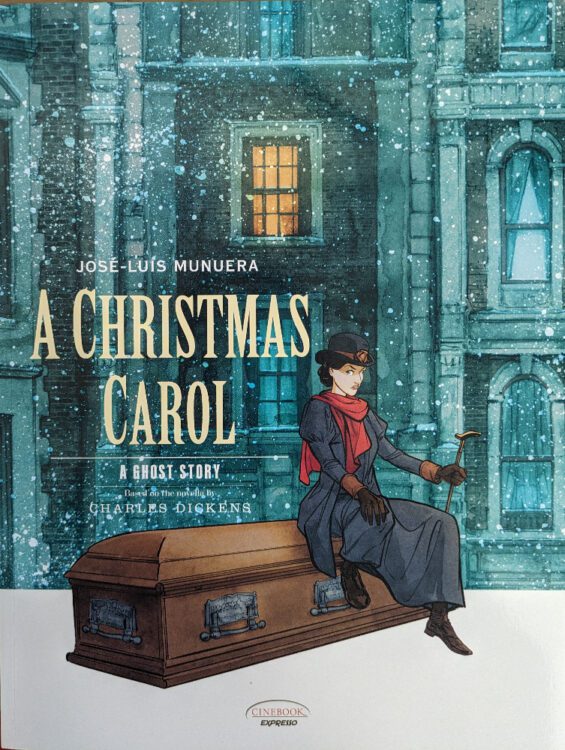
Comic Number 359: A Christmas Carol by Jose-Luis Munuera
A new English translation of this single-volume, European graphic novel came out just in time for this Christmas. I started the year with A Christmas Carol, and my love of adaptation meant that it was impossible to pass up this new and different version.
In the book, Munuera gender swaps a number of the characters, including Ebenezer Scrooge, who becomes Elizabeth in this version. Other than that, the story stays the same, at least, it does at first. Some could moan about the gender swap, complaining for no good reason about the wokeness of modern comics, “why change established characters?” etc, etc, but that is the nature of adaptation: to investigate existing narratives through new eyes. And in Munuera’s A Chirstmas Carol, the nature of woman changes the fabric of the story as it unfolds. The beginning may be the same but the outcome is different and it all relates to the change in gender.
This is a magnificent read and provides a fascinating take on a classic story. The artwork has an exaggerated quality to it and is suitably horrific when it needs to be but it also highlights the touching moments with finesse. I will definitely be writing about this in more detail in the new year and I highly recommend it.
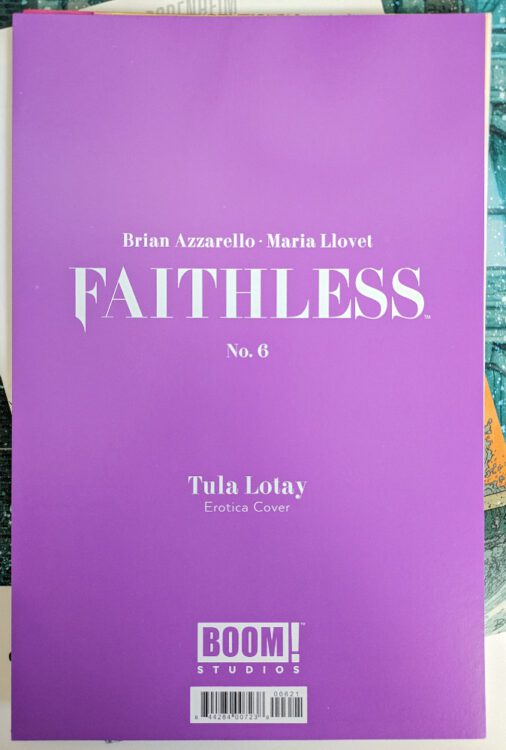
Credit: Image Comics
Comic Number 360: Faithless #6
I have all of the Faithless comics and I only re-read this one because I picked up a new variant of it from a recent trip to an antique fair. The story is an erotic, magical, tragedy beautifully illustrated by Maria Llovet.
The variant I picked up has an erotica cover illustrated by Tula Lotay and is a sensual depiction of part of the story. Although it adds nothing to the comic, and as a general rule I’m not a fan of variants, I am a fan of the artists who provided the variant covers for this series so I will pick them up when I see them.
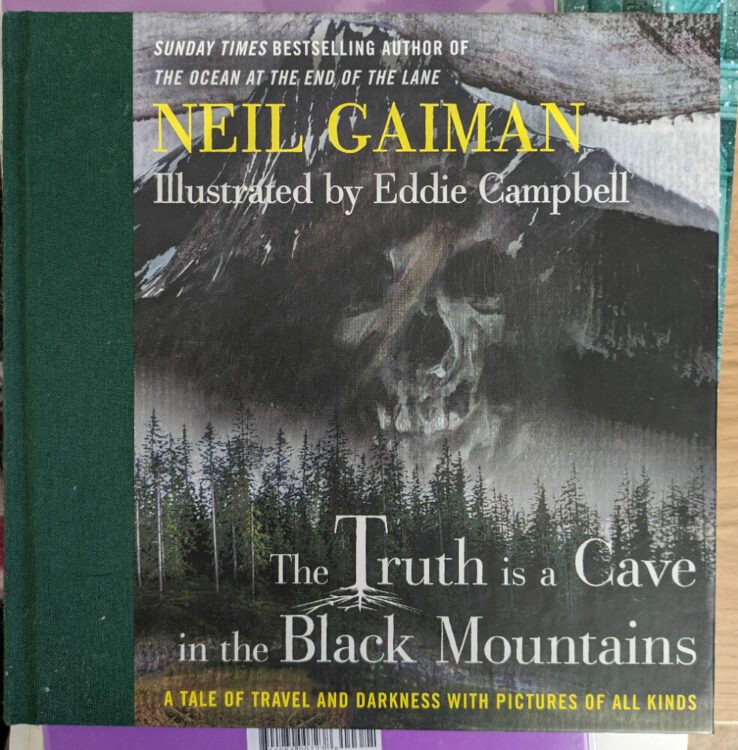
Comic Number 361: The Truth is a Cave in the Black Mountains
Written by Neil Gaiman and illustrated by Eddie Campbell, this is technically an illustrated novel but the illustrations are an integral part of the book, adding more than just a visual representation of the story. Page after page, Eddie Campbell’s artwork expands on the words written by Neil Gaiman and, at times, adopts a number of comic elements to move the narrative forward.
The characters’ speech is placed into balloons within the images and a number of character exchanges are in the form of comic strips, placed between blocks of text. Just like Gris Grimley’s Frankenstein, mentioned in an earlier post, The Truth is a Cave in the Black Mountains skirts between novel and comic, combining aspects of both to further muddy the water between the two art forms.
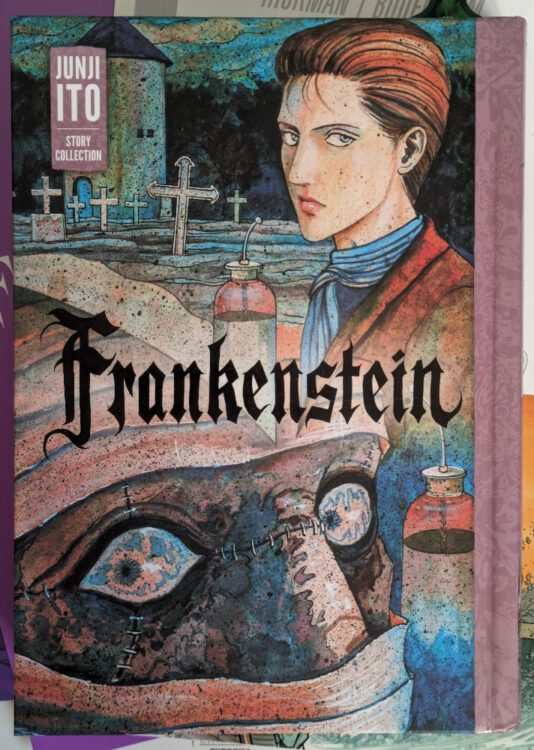
Comic Number 362 – 364: Junji Ito’s Frankenstein
This is a fairly hefty book, as most western translations of manga tend to be, hence covering off several numbers in my list. It is taking me some time to read, but this is because I want to savor it and not rush through it just to get to the end. Junji Ito’s artwork is sublime. He manages to combine an everyday, mundane existence with truly horrific images that burn into your brain. In this take on Frankenstein, a fairly faithful adaptation of the narrative, the aspects of horror that have become synonymous with the story are further exaggerated by Ito’s attention to visual detail.
I will be delving further into this adaptation later in the new year, comparing it to other comic book adaptations of the text, because I think it is a fascinating version and the fact it comes from a different part of the world to most of the versions I have read, it will provide a different insight into the narrative.
The book also has other horrific works by Junji Ito, which are worth reading. I do not have a large manga collection, but Ito definitely takes up a lot of space.
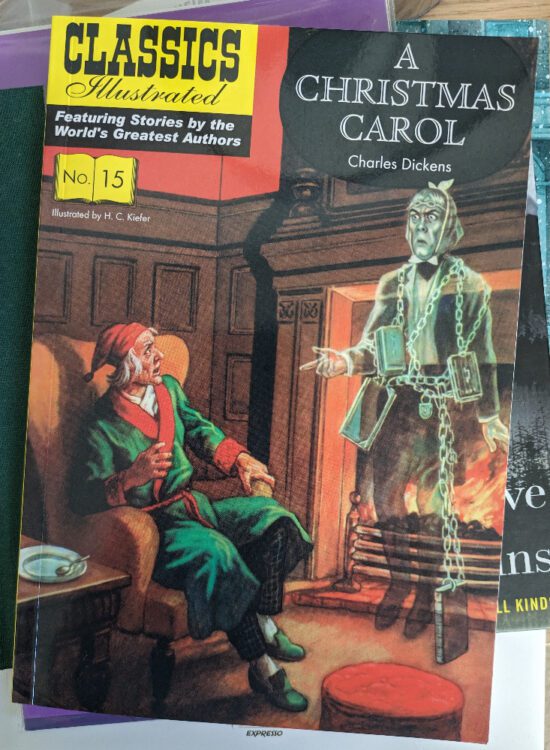
Classics Illustrated
Comic Number 365:
And then there was one. One final comic to finish off the year. And, because I am that kind of person, I return to where I started with a re-reading of the Classics Illustrated version of A Christmas Carol.
Just like the majority of the Classics Illustrated, A Christmas Carol is a traditional retelling of the classic novella with visuals that are instantly recognizable. Scrooge is a grumpy, wizened old man, dressed in a dressing gown and bed hat. The separation of Scrooge and the Ghosts from the Christmases that they travel to is wonderfully illustrated by Henry C Kiefer, who displays the visions like spirits, haunting the central character. The reduction in the story is not as obvious as other Classics Illustrated, especially as the story has been retold over and over in numerous mediums. The central story beats are a part of popular culture, everyone knows them and recognizes them, but the small details of the novella aren’t as often well known, some of the politics from the original have been forgotten, and therefore they are not missed in this retelling.
There are few comics that I re-read every year, but this is one of them. The original novella is a classic and so is this version of it. Along with The Muppet Christmas Carol, the Classics Illustrated retelling of Charles Dickens’ tale of redemption is a part of my annual Christmas traditions.
And with that, we reach the end of this Project 365. I will post a final farewell to the year of reading in the next couple of weeks, looking back at what I have read and if there is any meaning to any of it. But what about 2024? Has this project stirred up my love of comics and sparked my enjoyment once more? Well, all I can say for now is that I have a lot of comics, old and new, that I want to read, and comics-based plans for the year ahead.

